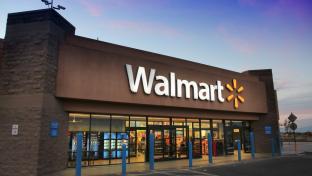Plan for Supply Chain Success This Holiday Season
Shipping and logistics companies are always attempting to predict the unpredictable. It comes with the territory when working with retailers which, in turn, sell to consumers. This is especially true during the holidays.
Traditionally, retailers and shippers prepare for peak demand with measures like forward deployment of inventory, adding warehousing and transportation capacity, and seasonal hiring. But these steps can backfire if projected numbers aren’t met and shippers are left with more inventory in warehouses or people on payroll than are needed.
The Wall Street Journal reports that shippers, after being burned by this situation before, are growing wary of holiday hiring in the face of current economic uncertainty.
Conflicting reports about anticipated retail sales can make supply chain management feel like a guessing game, and it can be hard to know how best to prepare. Some surveys point to an earlier start to the 2023 holiday season, which could ease the strain on the logistics sector by spreading sales across a longer period of time. But what if this theory proves to be wrong and the holiday season is just as compressed as usual?
The National Retail Federation forecasts that the holidays will arrive early this year — and with them, holiday spending sprees. Halloween is slated to kick things off, with spending expected to reach $12.2 billion. This is not only a rebound from the pandemic slump, but it exceeds pre-pandemic levels and would set a new record. Researchers at Mastercard project a 3.7% increase in early holiday spending. On the other hand, Bain & Company has a bleak outlook on holiday sales, and CNN reported decreased consumer spending earlier this year.
Some retailers are rolling out their annual discounts early, possibly responding to trends like those demonstrated by consumer research from PwC showing that 75% of shoppers plan to do most of their buying in early November, with experts suggesting consumers will shop early, and that they will prioritize getting more for their money than ever before.
Fortunately, there are steps shippers can take that will yield benefits in the long run, no matter what the coming months hold. Historically, the supply chain and logistics industry has been slow to embrace new technology. Now, in the face of uncertainty, it is time for modern, tech-driven approaches like integrated warehouse management system (WMS) and transportation management system (TMS) software to optimize both revenue and costs and put some cheer in the holiday season.
Regardless of how spending fluctuates, one thing does seem clear: consumers will likely keep making their purchases online in even greater numbers. Preference for home delivery is increasing, while preference for curbside and in-store pickup have both declined. According to PwC, the top priorities for online shoppers include: “Proof-of-delivery (83%), easy-to-use tracking (80%) and flexible delivery times (68%).”
Shippers must embrace technology that allows them to keep these expectations center stage. Shippers can prepare for the season not only through hiring and warehouse stock decisions, but by ensuring they have the right technology that integrates data from every step of the process. This way, they can provide the visibility and flexibility that customers and consumers demand.
Supply chain resilience is important all year round, but whether or not the holiday buying season starts early this year, there’s no time like the present to harness modern technology. In short, with no clear outlook, companies looking solely to retail projections rather than leaning into innovation are already behind.
— Doug Ladden, CEO & Co-Founder, Deliveright





